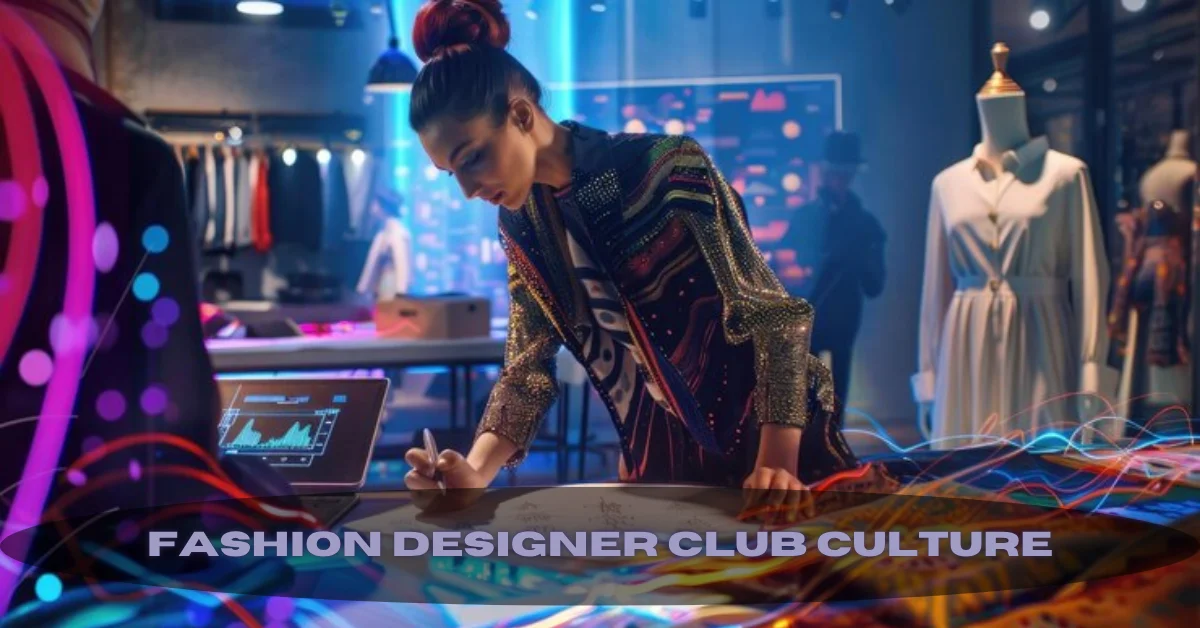Introduction
Fashion Designer Club Culture and nightlife have always shared a steamy, electric dance floor. From glitter-drenched discos to underground techno dungeons, what you wear has always said as much as how you move. This isn’t just about style—it’s about identity, rebellion, and raw self-expression. Let’s dive into how club culture and fashion have grown hand-in-hand over decades of dancefloor fever.
The Birth of Nightlife Culture in the 1960s
Post-War Optimism and Liberation
The 1960s were all about change. People were shedding post-war conservatism like a bad outfit. Nightclubs became havens for freedom, music, and personal expression. London’s swinging scene, especially Soho, was the breeding ground of modern nightlife.
The Rise of Mod Fashion and Discotheques
Mod culture, with its sharp tailoring, miniskirts, and mop-tops, ruled the night. Think Twiggy, Carnaby Street, and scooters buzzing toward underground clubs. Fashion was youthful, clean, and a little rebellious—just like the music.
The 1970s – The Disco Era and Studio 54’s Legacy
Glitter, Glam, and Groove
If the ’60s lit the match, the ’70s turned it into a disco inferno. Studio 54 in NYC wasn’t just a nightclub; it was a fashion runway dripping in sequins, feathers, and attitude. The bouncers were pickier than fashion show scouts—and the looks had to be iconic.
Designers Who Defined the Disco Look
Halston, Diane von Fürstenberg, and Stephen Burrows were the unofficial uniform makers of the dancefloor elite. Flowing silhouettes, metallics, and bold prints ruled under the pulsing lights.
1980s – Excess, Expression, and Avant-Garde
Punk, New Wave, and Club Kids
The 1980s tossed the rulebook. NYC’s Club Kids and London’s Blitz scene went full fantasy mode. Safety pins, fishnets, neon, and DIY madness were the norm. Nightclubs were no longer places to impress—they were places to transform.
Fashion Designers Inspired by Rebellion
Vivienne Westwood’s punk revolution and Jean Paul Gaultier’s boundary-pushing designs mirrored the club chaos. It was art. It was political. It was freakin’ fabulous.
1990s – Underground and Minimalist Movements
The Birth of Rave Culture and Techno Fashion
The ’90s saw the rise of warehouse raves and Berlin’s rebirth as Europe’s techno capital. Baggy pants, neon accents, crop tops, and platform sneakers took over. Fashion got looser, louder, and much more drug-friendly.
From Vivienne Westwood to Alexander McQueen
Designers like McQueen turned darkness and dystopia into runway magic, while Westwood remained a fierce torchbearer for rebellion—bringing underground energy into mainstream fashion.
Early 2000s – The Glam Revival
Y2K Aesthetics and Fashion’s Return to Sparkle
Think metallics, butterfly clips, low-rise jeans, and shiny everything. Y2K fashion was futuristic, sexy, and just the right kind of tacky. Paris Hilton and Britney Spears were the queens of the VIP section.
Fashion Icons Dominating VIP Booths
Designers like Tom Ford brought high-glam energy back to fashion. His Gucci era defined club luxe, while Juicy Couture tracksuits ruled pre-game culture.
The 2010s – Club Culture Goes Global
Globalization of EDM and Fashion Fusion
EDM exploded, and with it, the fashion. From Coachella fields to Ibiza dance floors, looks blended boho, rave, and high fashion. It was colorful, international, and Insta-ready.
Streetwear’s Role in Nightlife
Enter Off-White, Supreme, and Yeezy. Streetwear and sneakers stormed VIP lounges, blurring the lines between clubwear and casual chic.
Fashion Designers and Iconic Nightclubs
Karl Lagerfeld at Le Palace
Paris’ Le Palace was a fashion playground. Lagerfeld threw theme parties where the couture elite rubbed shoulders with drag queens and punks.
Jeremy Scott and Berlin’s Berghain
Moschino’s Jeremy Scott thrives in the irony and absurdity of club style. Berlin’s Berghain, infamous for its strict door policy and techno devotion, inspired a darker, industrial aesthetic.
The Influence of Music on Nightlife Fashion
DJs as New Fashion Icons
DJs like Peggy Gou, Honey Dijon, and Diplo don’t just spin—they set fashion trends. Their stage outfits influence streetwear and club style worldwide.
How Music Genres Shape Outfits
Techno: black, utilitarian, edgy. Disco: glam and glitz. House: playful and colorful. Your playlist influences your wardrobe more than you think.
Nightclubs as Runways
Real-Time Trend Showcases
Clubs are now real-time catwalks. Fashion lovers don’t wait for fashion week—they debut their looks on Friday night dance floors.
Collaborations Between Clubs and Designers
From Diesel collabs with Ibiza clubs to limited-edition capsule drops from Boiler Room, fashion and nightlife are literally in bed together.
The Role of Drag, Gender Fluidity, and Fashion Liberation
From Paris is Burning to RuPaul’s Drag Race
Drag culture exploded from the underground to the mainstream, bringing fierce fashion and unapologetic queerness into club style.
Designers Embracing Nonbinary Fashion
Harris Reed, Telfar, and Rick Owens blur gender lines, embracing the club scene’s celebration of identity in all its fluidity.
Social Media and the Reinvention of Club Style
Instagrammable Fashion Moments
If you didn’t take a selfie in the bathroom mirror, were you even there? Club fashion now lives as much online as on the floor.
Viral Club Looks and Influencer Culture
TikTok dances, influencer takeovers, and fit checks have turned every club night into a potential fashion campaign.
Nightlife and Sustainability in Fashion
Second-Hand Glam and Upcycled Clubwear
Vintage is in. Thrift finds and upcycled pieces dominate dance floors. Sustainable is sexy.
Clubs Promoting Eco-Conscious Fashion
Some clubs host clothing swaps, vintage pop-ups, and promote low-waste fashion events—yes, even when you’re covered in glitter.
Iconic Club Looks That Changed the Game
Signature Pieces from Each Era
From Halston’s wrap dresses to leather harnesses at Berghain, each era had its uniform. Each one said something bold and loud.
Fashion Statements That Made Headlines
Remember Rihanna in Swarovski crystals at CFDA? That was club-core haute couture—and it rewrote the rulebook.
The Future of Fashion and Club Culture
Virtual Clubs and Digital Fashion
Metaverse parties are real. Digital Fashion Designer Club Culture is now being sold for avatars. Your online self deserves a killer outfit too.
Metaverse Nightclubs and Avatars
Balenciaga’s Fortnite collab and virtual nightclubs like Decentraland are giving nightlife a new digital dress code.
Conclusion
From smoky jazz lounges to thumping metaverse raves, club culture and fashion have danced together through decades of rebellion, identity, and creativity. One fuels the other. And as long as the beat drops, Fashion Designer Club Culture will find new ways to shine under the strobe lights. Whether you’re dressing up for the basement or the blockchain, one thing’s clear: the club is always in session.

